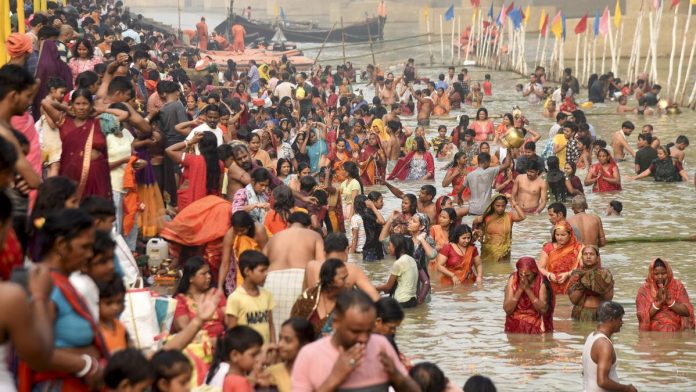November 5, 2024: Chhath Puja is one of the most important and unique festivals in India, particularly celebrated in the northern regions, especially in Bihar, Uttar Pradesh, Jharkhand, and parts of Nepal. It is a celebration dedicated to the Sun God (Surya) and Chhathi Maiya, the goddess associated with fertility and well-being. The festival is celebrated over four days, typically in the month of Kartik (which corresponds to October or November in the Gregorian calendar), and involves rigorous rituals and fasting.
ALSO READ : Chhath Puja : Purpose Of The Festival
The festival spans four days, each with distinct rituals:
Day 1 – Nahai Khai
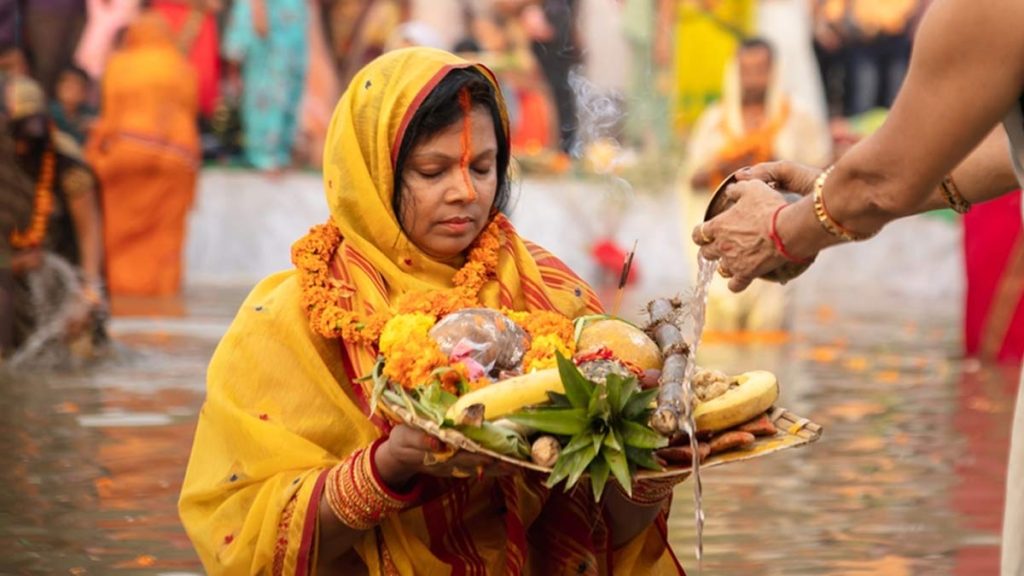
The first day involves a purification ritual, where devotees take a holy dip in the river or any water body to cleanse themselves. After this, they prepare offerings like rice, lentils, and vegetables. This day is dedicated to cleaning and preparing for the rest of the festival.
Day 2 – Lohanda and Kharna
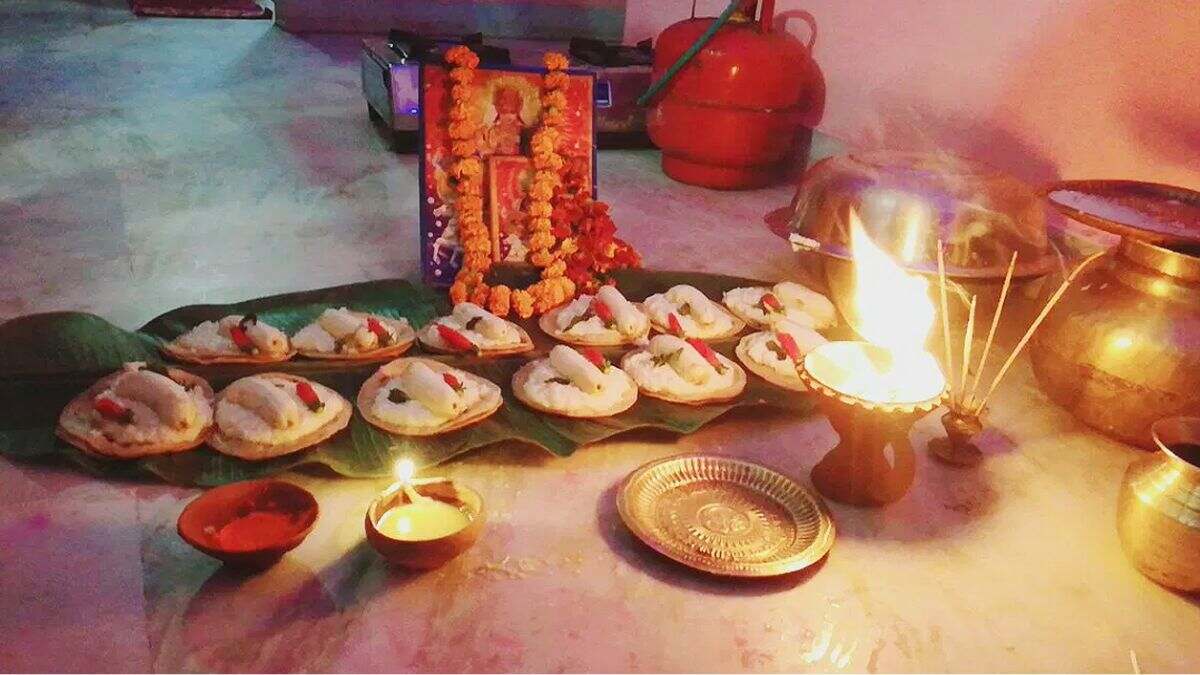
On this day, devotees observe a fast without water (nirjala) until the evening. In the evening, the main ritual is performed, where the offerings (like kheer, fruits, and roti) are prepared and offered to the Sun God after sunset. Devotees break their fast after this offering.
Day 3 – Sandhya Arghya

This is the most significant day of the festival. Devotees gather at riverbanks or other water bodies in the evening to offer prayers to the setting Sun. The ritual is called “Sandhya Arghya” (evening offering), where offerings of “Thekua” (a traditional sweet made of wheat, jaggery, and ghee) and fruits are placed in a basket (known as “dala”) and offered to the Sun God.
Day 4 – Usha Arghya
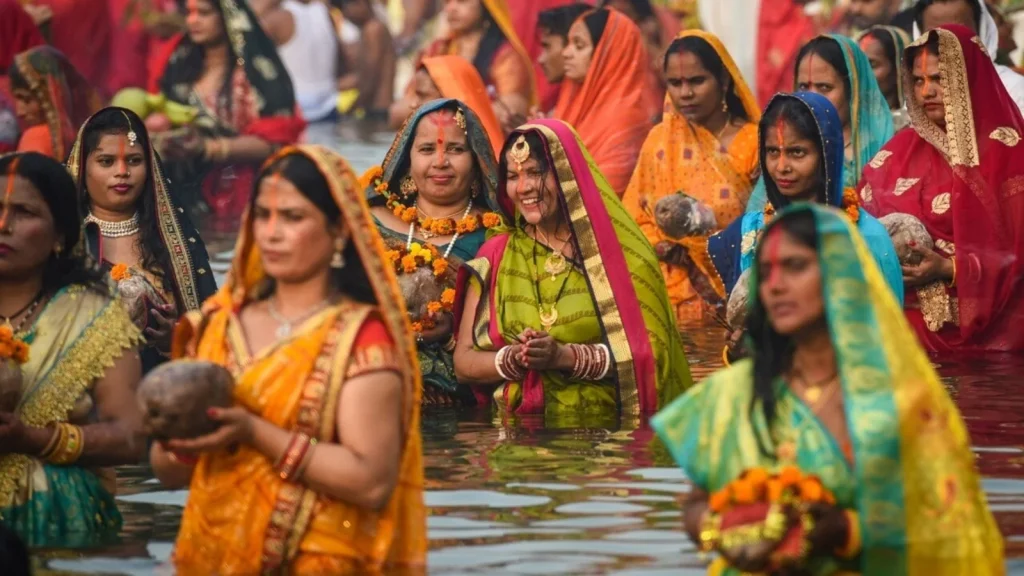
On the final day of Chhath Puja, devotees again gather at water bodies early in the morning before sunrise. This ritual is called “Usha Arghya” (morning offering). They offer prayers to the rising Sun and express gratitude for the blessings received during the festival. After this, devotees break their fast and the puja concludes.
Significance of the Sun
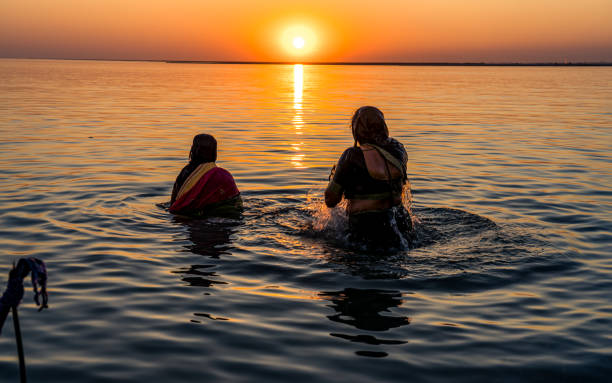
The Sun holds a central role in this festival, symbolizing energy, strength, and life. Devotees believe that the Sun’s rays have the power to heal and bless, especially when offered to him with pure devotion. The worship of the Sun also reflects a sense of respect for nature and the elements.
Preparation and Community Involvement
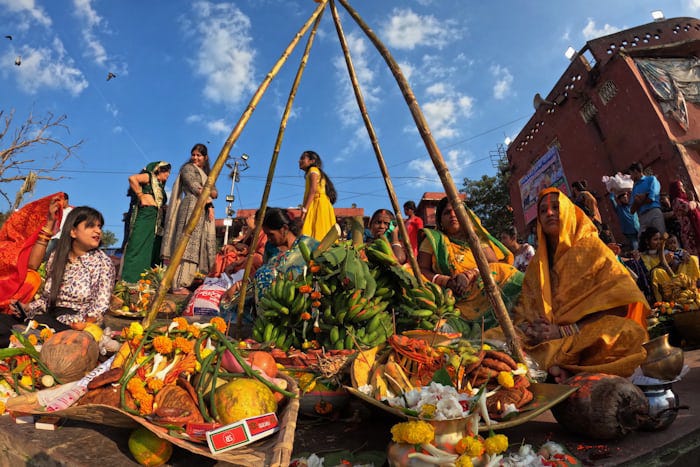
The preparation for Chhath Puja involves a lot of community participation. Families clean and decorate their homes and puja areas. Rivers, ponds, and other water bodies become focal points for the rituals, with people coming together to observe the offerings, sing traditional hymns, and chant prayers. The festival also sees grand processions to water bodies, where people carry offerings in decorated baskets.
Cultural Significance
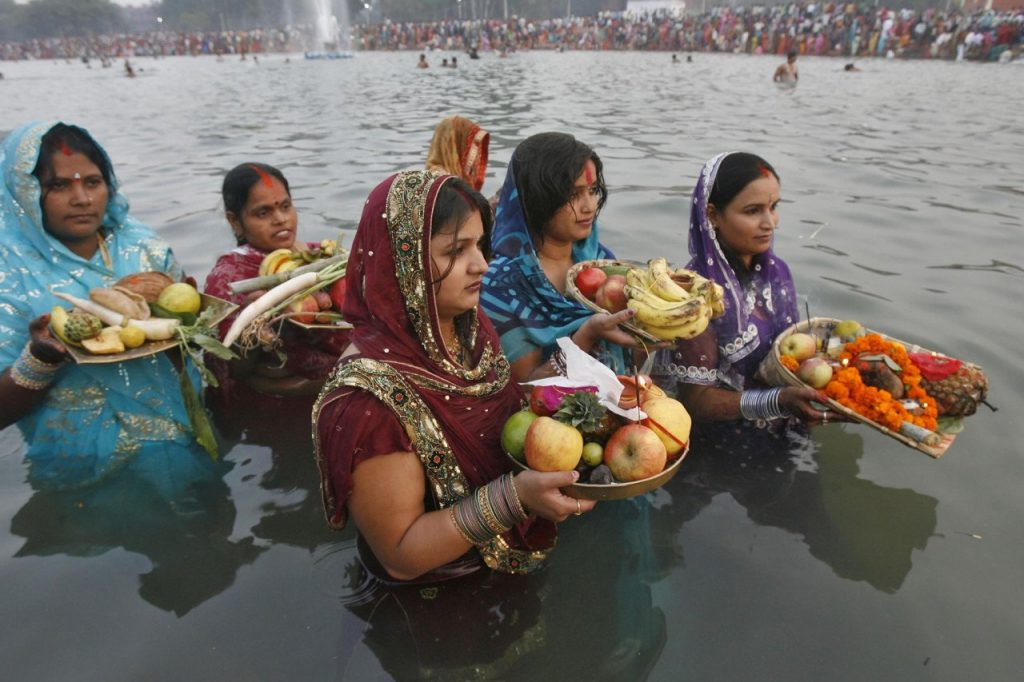
Chhath Puja is also an occasion for social unity. It’s a time when people come together, irrespective of caste or class, to celebrate the festival with great fervor. The festival emphasizes cleanliness, discipline, and devotion, with the fasting and rituals being considered acts of self-purification.
Common Offerings and Items:
Thekua

A traditional sweet made from wheat flour, jaggery, and ghee.
Fruits
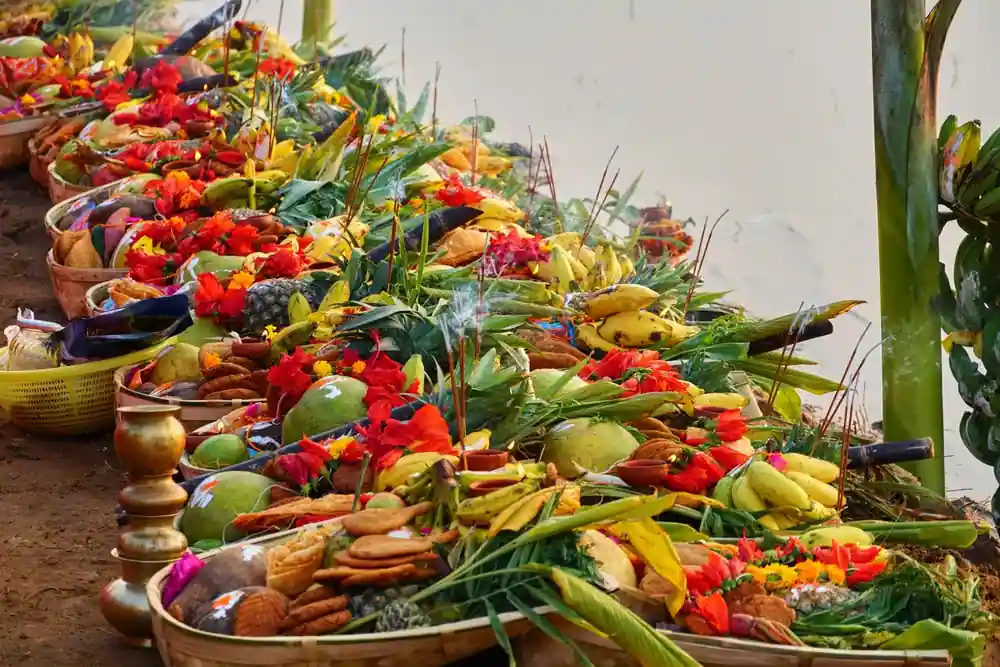
Bananas, coconut, sugarcane, and other seasonal fruits.
Prasad
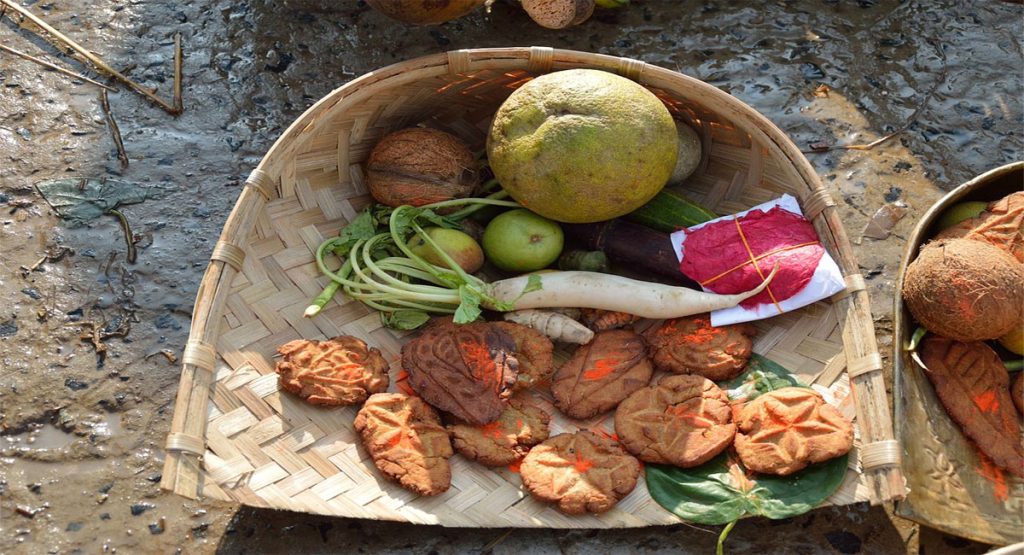
Rice, wheat flour, and jaggery offerings, often made into small cakes and sweets.
Water and Milk

For the offerings to the Sun God.
Conclusion:
Chhath Puja is not just a religious festival but also a celebration of nature, community, and familial bonds. It is a time for people to express gratitude, seek blessings, and come together in harmony. The unique rituals, especially the fasting, the offering of food, and the prayers to the Sun God, make it one of the most distinct and powerful festivals in the Hindu calendar.



